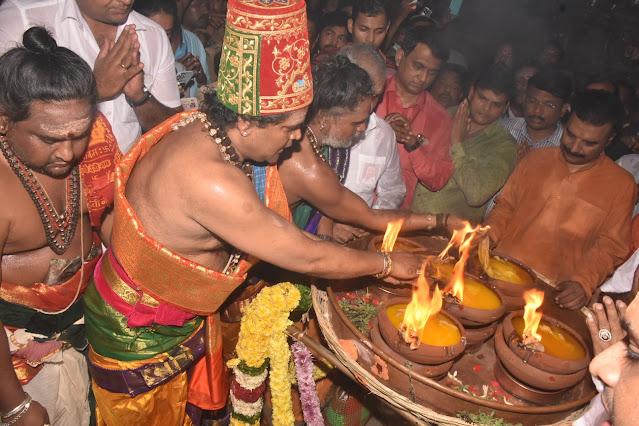The below narrative of Sri Ramana taking full responsibility for both the merits and demerits of a devotee is one of the most moving Bhagavan stories I have read. Sometimes archivists seem so determined to write of a disengaged "perfect" Ramana that his great compassion is hidden. In this narrative there is no hiding place for either the Guru or the devotee—both come out quite beautifully.
Merits and Demerits (Fruits of Karma)
Bhagavan was most tender with people who thought themselves for some reason or other to be miserable sinners and who went to him torn by repentance.
During summer evenings we used to sit in the open space near the well. We would collect in the dining hall for dinner and come back to the well. Suddenly, one day, a visitor started weeping bitterly, "I am a horrible sinner. For a long time, I have been coming to your feet, but there is no change in me. Can I become pure at last? How long am I to wait? When I am here with you I am good for a time, but when I leave this place I become a beast again. You cannot imagine how bad I can be, hardly a human being. Am I to remain a sinner forever?"
Bhagavan answered: "Why do you come to me? What have I to do with you? What is there between us that you should come here and weep and cry in front of me?"
The man started moaning and crying even more, as if his heart were breaking. "All my hopes of salvation are gone. You were my last refuge and you say you have nothing to do with me! To whom shall I turn now? What am I to do? To whom am I to go?"
Bhagavan watched for some time and said, "Am I your guru that I should be responsible for your salvation? Have I ever said that I am your master?"
"If you are not my master, then who is? And who are you, if not my master? You are my guru, you are my guardian angel, you will pity me and release from my sins!" He started sobbing and crying again.
We all sat silent, overcome with pity. Only Bhagavan looked alert and matter-of-fact.
Bhagavan: "If I am your guru, what are my fees? Surely you should pay me for my services."
Devotee: "But you won't take anything," cried the visitor "What can I give you?"
Bhagavan: "Did I ever say that I don't take anything? And did you ever ask me what you can give me?"
Devotee: "If you would take, then ask me. There is nothing I would not give you."
Bhagavan: "All right. Now I am asking. Give me. What will you give me?"
Devotee: "Take anything, all is yours."
Bhagavan: "Then give me all the good you have done in this world."
Devotee: "What good could I have done? I have not a single virtue to my credit."
Bhagavan: "You have promised to give. Now give. Don't talk of your credit. Just give away all the good you have done in your past."
Devotee: "Yes, I shall give. But how does one give? Tell me how the giving is done and I shall give."
Bhagavan: "Say like this: 'All the good I have done in the past I am giving away entirely to my guru. Henceforth I have no merit from it nor have I any concern with it.' Say it with your whole heart."
Devotee: "All right, Swami, I am giving away to you all the good I have done so far, if I have done any, and all its good effects. I am giving it to you gladly, for you are my master and you are asking me to give it all away to you."
Bhagavan: "But this is not enough," said Bhagavan sternly.
Devotee: "I gave you all I have and all you asked me to give. I have nothing more to give."
Bhagavan: "No, you have. Give me all your sins."
Devotees: The man looked wildly at Bhagavan, terror-stricken. "You do not know, Swami, what you are asking for. If you knew, you would not ask me. If you take over my sins, your body will rot and burn. You do not know me; you do not know my sins. Please do not ask me for my sins." And he wept bitterly.
Bhagavan: "I shall look after myself, don't you worry about me," said Bhagavan. "All I want from you is your sins."
For a long time, the bargain would not go through. The man refused to part with his sins. But Bhagavan was adamant.
Bhagavan: "Either give me your sins along with your merits, or keep both and don't think of me as your master."
In the end the visitor's scruples broke down and he declared: "Whatever sins I have done, they are no longer mine. All of them and their results, too belong to Ramana."
Bhagavan seemed to be satisfied. "From now on there is no good nor bad in you. You are just pure. Go and do nothing, neither good nor bad. Remain yourself, remain what you are."
A great peace fell over the man and over us all. No one knows what happened to the fortunate visitor, he was never seen in the Ashram again. He might have been in no further need of coming.
Arunachala Ramana, Eternal Ocean of Grace
The Guiding Presence, Book 7, page 337-339











































